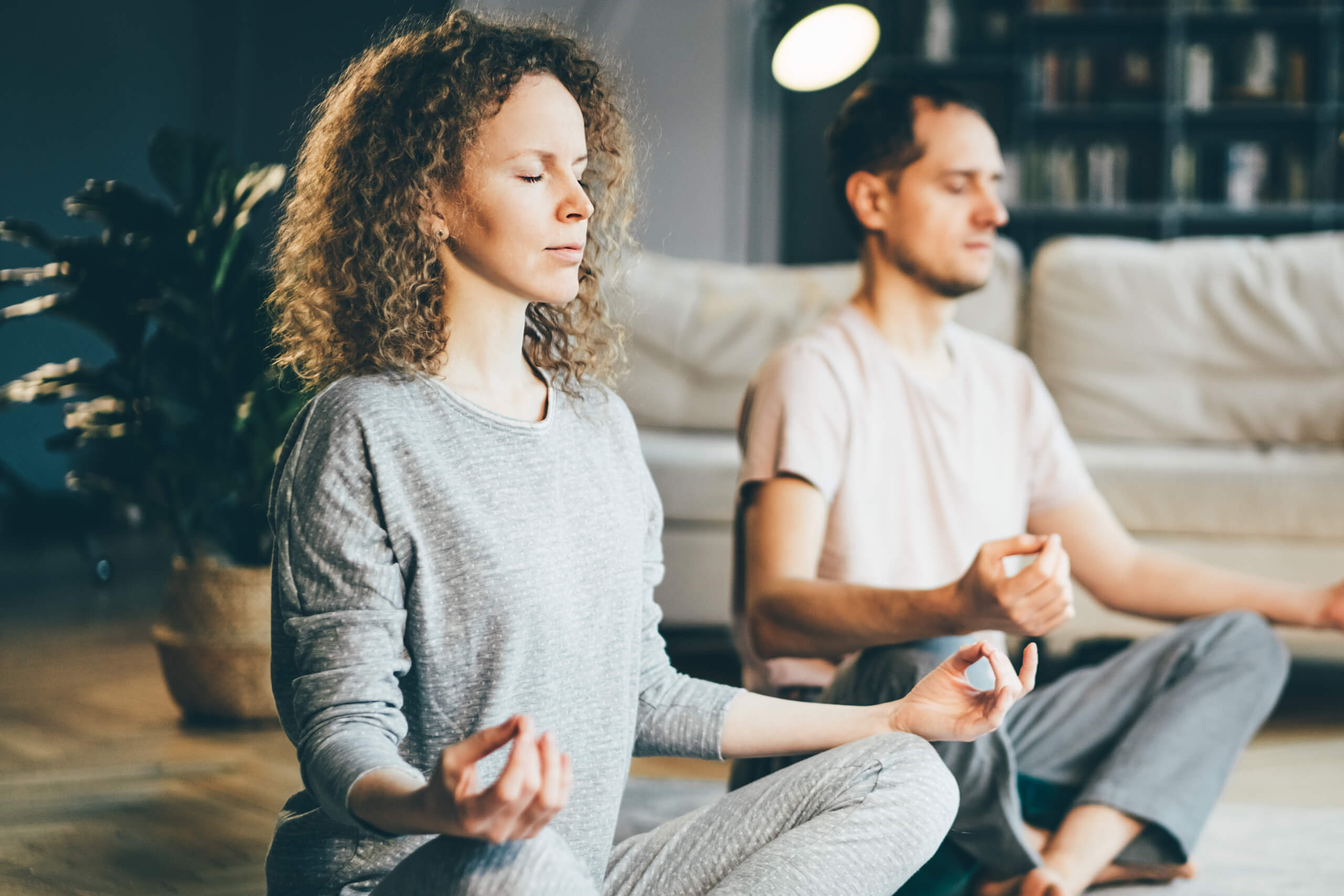Seasonal Affective Disorder (SAD) is a type of depression that typically occurs during the fall and winter months when daylight hours are shorter. This condition affects millions of people worldwide, causing symptoms such as fatigue, low energy, irritability, and changes in appetite or sleep patterns. While traditional treatments like light therapy and medications are commonly prescribed, there are also natural methods that can help alleviate symptoms and improve overall mood.
Introduction to Seasonal Affective Disorder (SAD)
Definition and prevalence
SAD is a mood disorder characterized by recurring depressive episodes that occur during specific seasons, most commonly in the fall and winter months. It is estimated that approximately 5% of adults in the United States experience SAD, with a higher prevalence in northern regions where there is less sunlight during winter.
Symptoms of SAD
Symptoms of SAD may vary from person to person but often include feelings of sadness or hopelessness, loss of interest in activities, changes in appetite or weight, difficulty concentrating, and lethargy. These symptoms can significantly impact daily functioning and quality of life.
Understanding the Causes of SAD
Role of sunlight and melatonin
One of the primary theories behind SAD is the disruption of the body’s internal clock, or circadian rhythm, due to reduced exposure to sunlight during the winter months. This lack of sunlight can lead to an overproduction of the hormone melatonin, which regulates sleep-wake cycles and mood.
Serotonin levels and its impact on mood
Sunlight exposure also plays a crucial role in the production of serotonin, often referred to as the “feel-good” neurotransmitter. Low levels of serotonin have been linked to depression and mood disorders, highlighting the importance of sunlight in regulating mood. To reaise your serotonin levels you can take Night Night supplement.
Traditional Treatments for SAD
Light therapy
Light therapy, also known as phototherapy, involves sitting in front of a specialized light box that emits bright light similar to natural sunlight. This exposure helps regulate circadian rhythms and improve mood in individuals with SAD.
Medications
Antidepressant medications, such as selective serotonin reuptake inhibitors (SSRIs), are commonly prescribed to manage symptoms of SAD. These medications work by increasing the levels of neurotransmitters like serotonin in the brain. Supplement Night Night may help.
Natural Ways to Alleviate SAD Symptoms
Outdoor activities and exposure to natural light
Spending time outdoors, even on cloudy days, can provide exposure to natural light and help regulate circadian rhythms. Activities like walking, hiking, or gardening can also boost mood and reduce feelings of depression.
Dietary changes for mood regulation
Certain foods rich in omega-3 fatty acids, such as salmon, walnuts, and flaxseeds, have been shown to have mood-stabilizing effects. Additionally, maintaining a balanced diet with plenty of fruits, vegetables, and whole grains can support overall mental and physical well-being.
Regular exercise and its benefits
Exercise releases endorphins, chemicals in the brain that act as natural painkillers and mood elevators. Engaging in regular physical activity, whether it’s yoga, swimming, or dancing, can help reduce symptoms of depression and anxiety associated with SAD.
The Importance of Social Support
Connecting with friends and family
Maintaining social connections is essential for mental health, especially during times of increased stress or isolation. Reach out to loved ones regularly, whether it’s through phone calls, video chats, or in-person gatherings, to provide and receive support.
Joining support groups
Joining a support group for individuals with SAD can offer a sense of community and understanding. Sharing experiences, coping strategies, and resources with others who are going through similar challenges can be empowering and reassuring.
Mindfulness and Stress Reduction Techniques
Meditation and deep breathing exercises
Practicing mindfulness techniques like meditation, deep breathing, and progressive muscle relaxation can help reduce stress and promote a sense of calmness and relaxation. These practices can be done anywhere, anytime, and are particularly beneficial during periods of heightened anxiety or depression.
Yoga and its calming effects
Yoga combines physical postures, breathwork, and meditation to promote relaxation and inner peace. Regular practice can improve flexibility, strength, and mental clarity while reducing symptoms of depression and anxiety associated with SAD.
Incorporating Hygge Into Your Life
Definition of hygge
Hygge (pronounced hoo-gah) is a Danish concept that emphasizes coziness, comfort, and contentment in everyday life. It involves creating a warm and inviting atmosphere at home and enjoying simple pleasures with loved ones.
How hygge can improve mood during winter months
Incorporating hygge into your daily routine can help combat feelings of sadness and isolation during the winter months. Light candles, snuggle up with a soft blanket, and indulge in comforting activities like reading a book or watching a movie to create a sense of warmth and well-being.
The Role of Vitamin D in Mood Regulation
Sources of vitamin D
Vitamin D is often referred to as the “sunshine vitamin” because it is produced in the skin in response to sunlight exposure. However, it can also be obtained through dietary sources such as fatty fish, fortified dairy products, and supplements.
Recommended intake for SAD sufferers
Individuals with SAD may benefit from higher doses of vitamin D supplementation, especially during the winter months when sunlight exposure is limited. Consult with a healthcare provider to determine the appropriate dosage based on individual needs and preferences.
Aromatherapy and Essential Oils for Mood Enhancement
Popular essential oils for boosting mood
Essential oils like lavender, bergamot, and chamomile have been shown to have calming and mood-enhancing properties. Diffusing these oils or adding them to bathwater can promote relaxation and reduce feelings of anxiety and depression.
Methods of incorporating aromatherapy into daily routine
Experiment with different essential oils and methods of diffusion, such as using a diffuser, inhaling directly from the bottle, or adding a few drops to a warm bath. Find what works best for you and incorporate aromatherapy into your daily self-care routine.
Creating a Comforting Environment at Home
Decluttering and organizing spaces
A clutter-free environment can promote feelings of calmness and relaxation. Take time to declutter and organize your living spaces, removing any unnecessary items or distractions that may contribute to stress or anxiety.
Adding cozy elements to living areas
Soft blankets, plush pillows, and warm lighting can create a cozy atmosphere that fosters feelings of comfort and security. Surround yourself with items that bring you joy and make you feel relaxed and content at home.
The Benefits of Pet Therapy
How pets can provide emotional support
Pets offer unconditional love, companionship, and emotional support, making them valuable allies in managing symptoms of SAD. Spending time with pets can reduce feelings of loneliness, anxiety, and depression, promoting a sense of well-being and happiness.
Activities to enjoy with pets for mood improvement
Take your dog for a walk in the park, cuddle with your cat on the couch, or simply enjoy the presence of your furry friend by your side. Engaging in activities with pets can boost mood, reduce stress, and increase feelings of connection and belonging.
Art and Creativity as Therapeutic Outlets
Painting, drawing, and other artistic expressions
Artistic activities allow for self-expression and creativity, serving as a therapeutic outlet for processing emotions and reducing stress. Whether you’re painting, drawing, sculpting, or crafting, engaging in artistic pursuits can uplift mood and enhance overall well-being.
Writing and journaling for self-reflection
Writing offers a way to explore thoughts and feelings, gain insight into personal experiences, and practice self-reflection. Keeping a journal or writing poetry can help alleviate symptoms of depression and anxiety while promoting a sense of clarity and self-awareness.
Getting Sufficient Sleep
Importance of a consistent sleep schedule
Establishing a regular sleep routine and prioritizing quality sleep is essential for mental and emotional health. Aim for seven to nine hours of uninterrupted sleep each night and create a relaxing bedtime routine to signal to your body that it’s time to wind down.
Tips for improving sleep quality
Limit screen time before bed, create a comfortable sleep environment, and avoid caffeine and alcohol close to bedtime. Practice relaxation techniques like deep breathing or progressive muscle relaxation to quiet the mind and prepare for restful sleep.
Seeking Professional Help When Needed
Therapy options for managing SAD
Individual therapy, cognitive-behavioral therapy (CBT), and other forms of psychotherapy can be effective in treating SAD symptoms. These approaches help individuals identify negative thought patterns, develop coping strategies, and build resilience against depression.
When to consult a healthcare provider
If symptoms of SAD persist or significantly interfere with daily functioning, it’s important to seek help from a qualified healthcare professional. A doctor or mental health provider can assess symptoms, provide a diagnosis, and recommend appropriate treatment options tailored to individual needs.
Conclusion
Seasonal Affective Disorder can have a significant impact on mental and emotional well-being, especially during the colder months. While traditional treatments like light therapy and medications are available, there are also natural ways to alleviate symptoms and boost mood. By incorporating outdoor activities, healthy lifestyle habits, social support, and self-care practices into daily life, individuals can effectively manage SAD and improve their overall quality of life.
FAQs
- Can Seasonal Affective Disorder affect anyone?
- While SAD can occur in people of all ages, genders, and backgrounds, certain factors such as geographic location and family history may increase the risk.
- Is Seasonal Affective Disorder the same as winter blues?
- Winter blues, or subclinical SAD, refers to milder symptoms of depression that occur during the winter months but do not meet the criteria for a clinical diagnosis of SAD.
- Are there any specific foods that can help alleviate symptoms of SAD?
- Foods rich in omega-3 fatty acids, such as fish, nuts, and seeds, as well as those containing vitamin D, like fortified dairy products, may help improve mood and overall well-being.
- Is light therapy effective for treating Seasonal Affective Disorder?
- Light therapy has been shown to be effective in reducing symptoms of SAD by regulating circadian rhythms and increasing serotonin levels in the brain.
- How long does it take to see improvement with natural treatments for SAD?
- The timeline for improvement with natural treatments may vary from person to person. Consistency and adherence to recommended lifestyle changes are key factors in achieving positive outcomes.
Related Posts
23/12/2024
The Link Between Sleep and Mental Health: How Night Night Helps
Ever feel like a bad night’s sleep turns your world upside down? That’s no coincidence. Sleep and mental health are…
11/12/2024
5-HTP: Supporting Mood and Sleep
Struggling with mood swings or restless nights? You're not alone. In today’s fast-paced world, maintaining emotional…
29/11/2024
Mood-Boosting Foods and Supplements for Better Mental Well-being
In our fast-paced world, maintaining mental well-being is more challenging yet more crucial than ever. Beyond lifestyle…
17/11/2024
How GABA Improves Sleep Quality and Relaxation
In today’s fast-paced world, many people struggle with achieving a restful night’s sleep. Anxiety, stress, and hectic…
05/11/2024
The Role of L-Theanine in Promoting Relaxation and Sleep
L-Theanine, an amino acid primarily found in tea leaves, has been celebrated for its unique ability to promote…
24/10/2024
How to Manage Stress Naturally with Supplements
Stress is an unavoidable part of life, but how we manage it can make all the difference in our mental and physical…
12/10/2024
Understanding the Gut-Brain Connection: Diet for Mental Health
Did you know that your gut and brain are constantly communicating? It’s called the gut-brain axis, and it plays a vital…
30/09/2024
The Role of Adaptogens in Reducing Stress and Anxiety
In today's fast-paced world, stress and anxiety are common challenges many of us face daily. While lifestyle changes…
18/09/2024
Top 7 Natural Supplements to Boost Your Mental Clarity
In today’s fast-paced world, maintaining mental clarity is more important than ever. Whether you’re juggling work…











